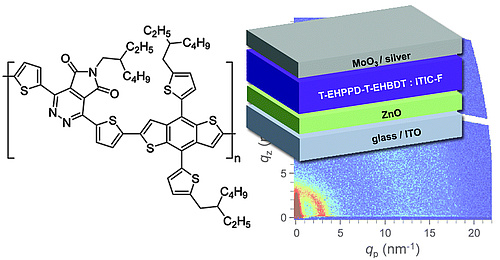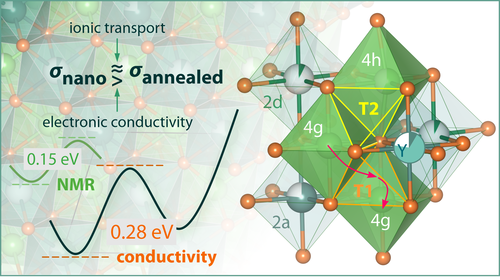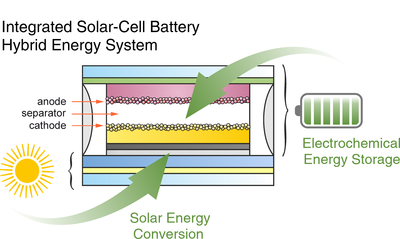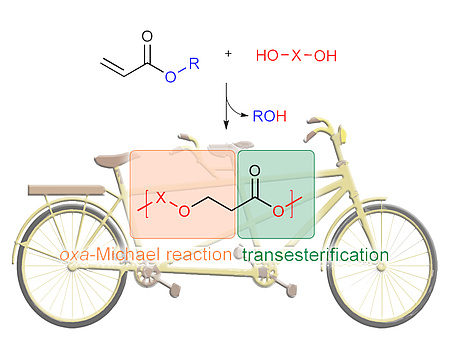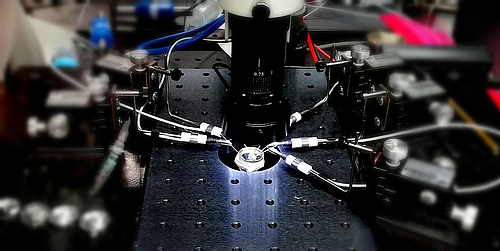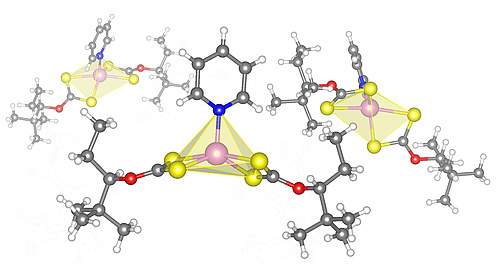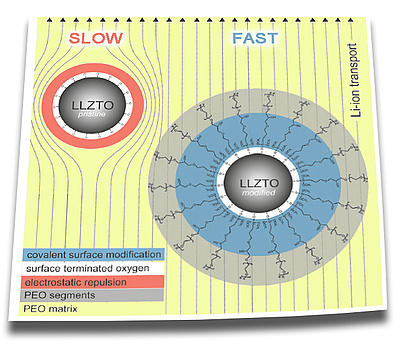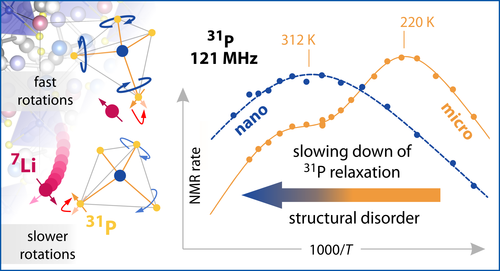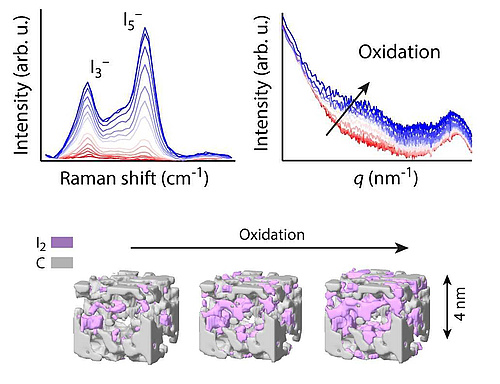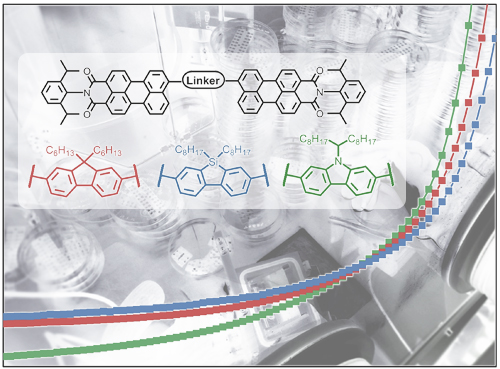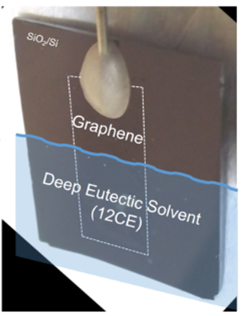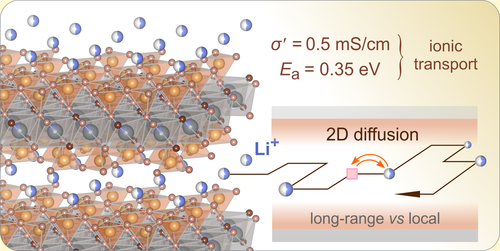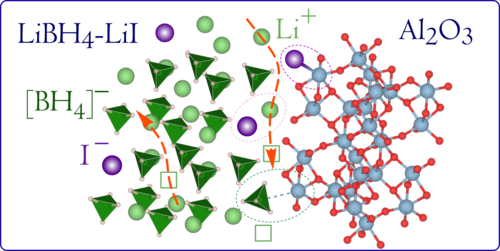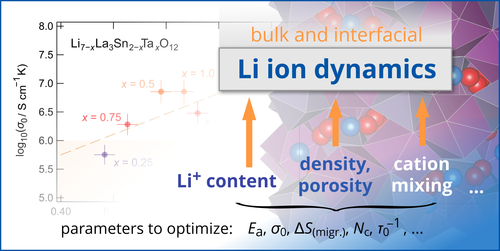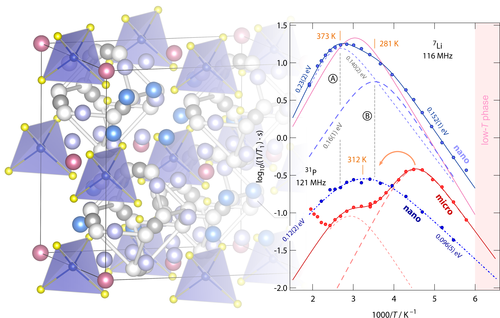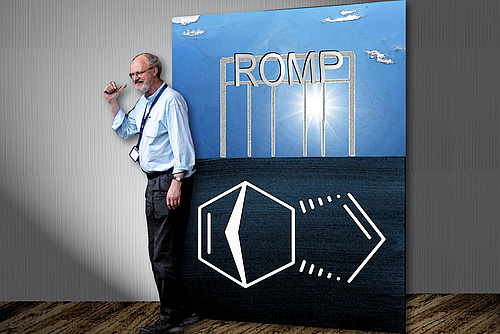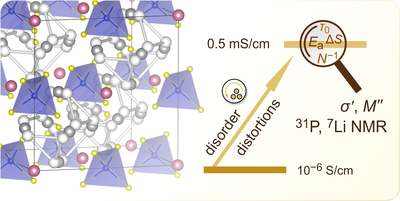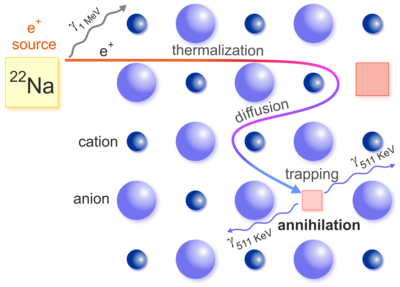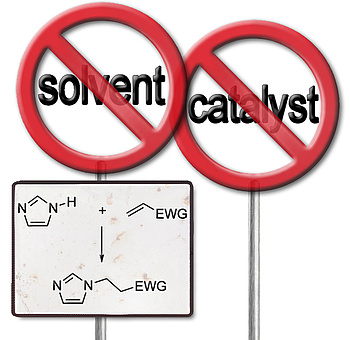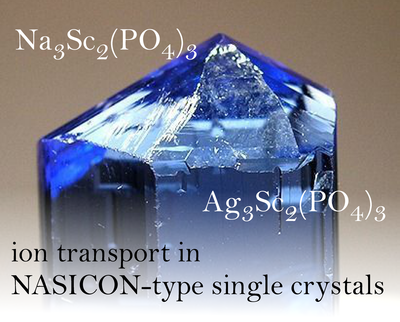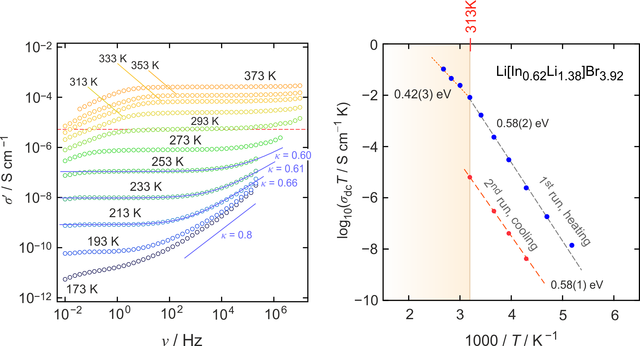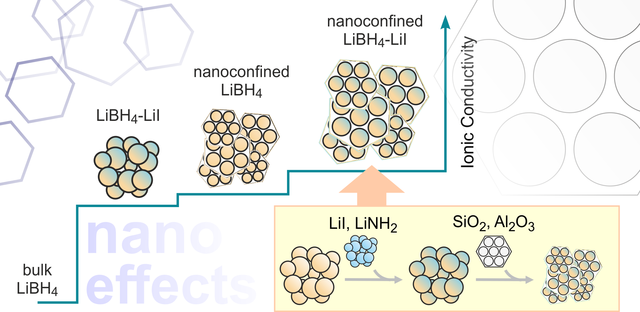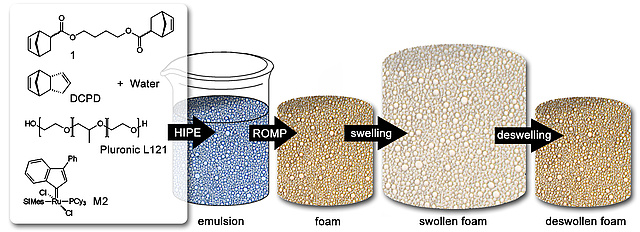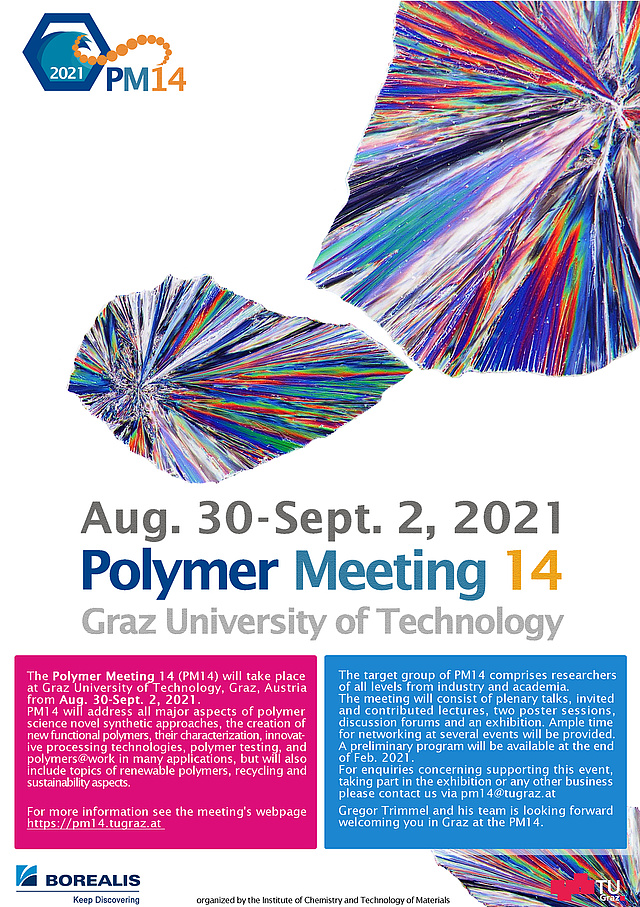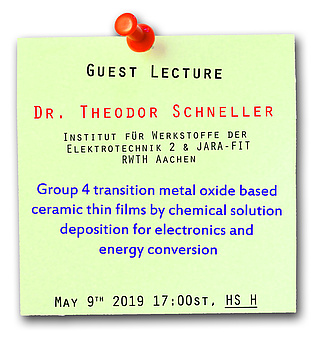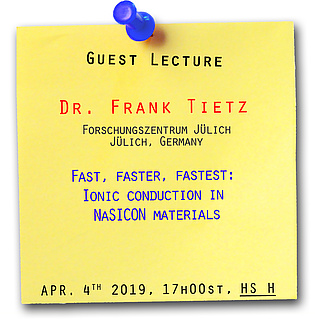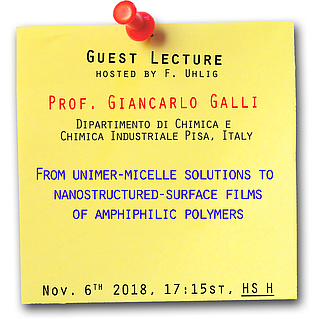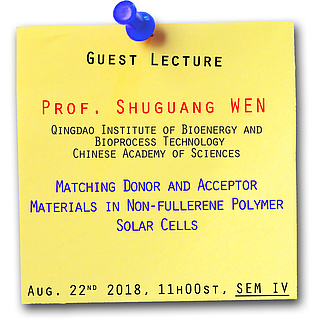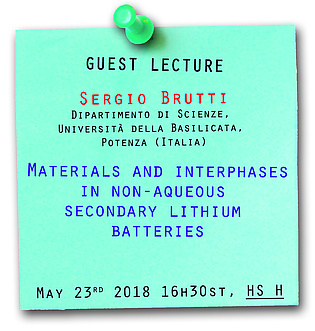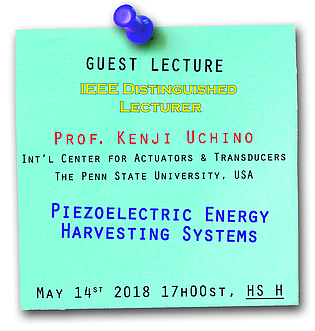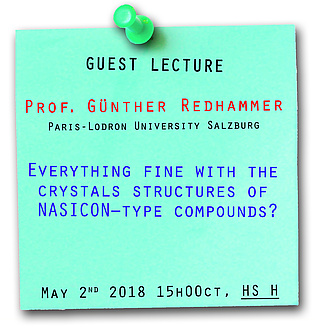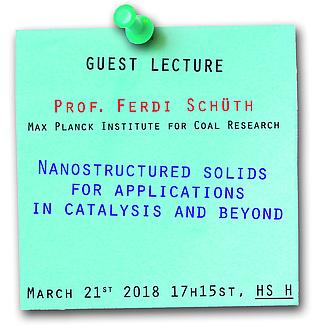
 Pyrrolopyridazinedione-based copolymer for fullerene-free organic solar cells
Pyrrolopyridazinedione-based copolymer for fullerene-free organic solar cells
The recent success of non-fullerene acceptors in organic photovoltaics also entails a change in the requirements to the polymer donor in terms of optical and morphological properties leading to a demand for novel conjugated polymers. Recently, a team of researches from Slovenia, China and Graz under the lead of Astrid Knall and Thomas Rath reports on the synthesis of a 1,4-bis-(thiophene-2-yl)-pyrrolopyridazinedione based copolymer with 2-ethylhexyl substituents on the pyrrolopyridazinedione moiety. A 2D conjugated benzodithiophene (BDT) was chosen as comonomer. The resulting copolymer T-EHPPD-T-EHBDT showed a molecular weight of 10.2 kDa, an optical band gap of 1.79 eV, a good hole mobility nd a preferred face-on orientation with regard to the substrate. The comparably wide band gap as well as the determined energy levels (HOMO: −5.47 eV, LUMO: −3.68 eV) match well with the narrow band gap non-fullerene acceptor ITIC-F, which was used as the acceptor phase in the bulk heterojunction absorber layers in the investigated solar cells. The solar cells, prepared in inverted architecture, revealed power conversion efficiencies up to 7.4% using a donor:acceptor ratio of 1:
1 in the absorber layer.
 Nanocrystalline Y-Containing Bromides for Li-Ion Batteries — Self-Improving Electrolytes
Nanocrystalline Y-Containing Bromides for Li-Ion Batteries — Self-Improving Electrolytes
Maria Gombotz managed to thouroughly characterize Li3YBr6 being a powerful ternary solid electrolyte for future all-solid-state batteries; LYB exhibits room temperature conductivities in the order of few mS/cm. Sophisticated NMR (incl. also 79Br measurements) and broadband conductivity revealed a change in Li transport mechanism just below ambient temperature which is in excellent agreement with Wolfgang Zeier's neutron diffraction measurements (Münster, D) pointing to a redistrubution of the Li ions in their Li sublattice.
Design principle. The partial occupation of originally interstitial sites is at the heart of facile ion transport in high-temperature LYB. This pivotal feature resembles that in LTO anode materials crystallizing with spinel structure Bernhard Gadermaier is working on in our group. It constitutes an important design principle for ceramic electrolytes that is also met in other systems. Maria's study, which once again shows how important local structures are, will soon appear in an ACS special collection of papers on mechanochemistry for sustainable materials synthesis, vide infra.
Self-improving electrolytes. LYB obtained directly after short milling times shows practically the same conductivities as their annealed analogs, no imperative annealing steps at high temperatures (> 100 °C) are necessary. Importanytly, any slight raise in temperatur, e.g., during battery operation, will increase ion dynamics. Thus, the material can be considered as a self-improving ceramic electrolyte.
Further reading: Fast Li ion dynamics in the mechanosynthesized nanostructured form of the solid electrolyte Li3YBr6, M. Gombotz, H. M. R. Wilkening, ACS Sust. Chem. Eng. (2020), in press (invited paper).
 New Integrated Hybrid Devices: Solar Cell Directly Energizes Li-Ion Batterie
New Integrated Hybrid Devices: Solar Cell Directly Energizes Li-Ion Batterie
Ilie Hanzu and Thomas Rath devloped an integrated solar-cell battery hybrid system by joining up the two systems in one device. The novel design, taking advantage of clever balancing the electrochemical materials properties, opens the gate towards applications in fields like the Internet of Things (IoT), artificial intelligence, medical sensors etc.
Paper will appear soon in ACS Sust. Chem. Eng.: A New Solar-Cell-Battery Hybrid Energy System: Integrating Organic Photovoltaics with Li-Ion and Na-Ion Technologies, S. F. Hoefler, R. Zettl, D. Knez, G. Haberfehlner, F. Hofer, T. Rath, G. Trimmel, H. M. R. Wilkening and I. Hanzu, ACS Sust. Chem. Engin. (2020), in press.
 New way of polymerizing alkyl acrylates
New way of polymerizing alkyl acrylates
Researchers of the Christian Doppler Laboratory for Organocatalysis in Polymerization hosted by the ICTM and the National Institute of Chemistry, Ljubljana reported the direct synthesis of poly(ester-ether)s from alkyl acrylates and diols in a communication in Polymer Chemistry. The nucleophile initiated reaction is performed under solvent-free conditions and findings pave the way for avoiding the preparation of hydroxy functionalized acrylates, commonly used as monomers in this type of polymerization. The polymerization proceeds via two mechanistically distinct reaction steps: the oxa-Michael addition and transesterification. Both transformations are promoted by the same intermediate which is formed upon the reaction of a nucleophile (e.g. 1,8-diazabicyclo[5.4.0]undec-7-ene (DBU)) present in catalytic amounts with a Michael acceptor. These findings contribute to the overarching aim of creating greener, more sustainable and intensified polymerization processes.
 New CD-Laboratory at ICTM
New CD-Laboratory at ICTM
ICTM is proud to announce the start of a new CD-lab headed by Dr. Daniel Rettenwander. High interfacial resistances reduce the performance of solid state batteries and solving this issue is a key for enabling the practical use of these devices. Above that, the aim of the new CD Laboratory for Solid-State Batteries is to make this particularly safe energy storage system fit for electric vehicles and other high-energy applications. Read the press release of Graz University of Technology for more information.
 On the thermal decomposition of zinc xanthate complexes
On the thermal decomposition of zinc xanthate complexes
Metal xanthates are versatile single source precursors for the preparation of metal sulfides. In this study, a team of researchers around Gregor Trimmel presents the synthesis of two novel zinc xanthate complexes. A thorough investigation of these compounds revealed distinct differences in their structural and thermal properties. Both compounds show a two-step thermal decomposition with an onset temperature of about 150 °C. Moreover, different mechanisms are revealed for the two phases of the decomposition based on high resolution mass spectrometry investigations. The thermal conversion process produces nanocrystalline zinc sulfide with different primary crystallite size of 4.4 nm or 11.4 nm depending on the nature of the zinc xanthate complex.
 Great success for Hanzu's Solabat team: new project granted
Great success for Hanzu's Solabat team: new project granted
Ilie Hanzu (Ass.-Prof. des.) is going to lead a follow-up project that focusses on the development of so-called hybrid devices, which is the direct combination of a solar cell with a battery. Medicine, Internet of Things and many other areas may benefit from such highly independent energy storage systems. Congratulations to Ilie Hanzu and Thomas Rath! For the next two years Solabat2 is supported by 400.000 EUR. Link to twitter.
The Solabat project represents an example par excellence for the interdisciplinary work of the two academic chairs of our institute - by bringing together experienced and younger scientists. Hopefully, a joint publication will be accepted soon.
 Lowering the interfacial resistances in composite membranes
Lowering the interfacial resistances in composite membranes
Ceramic-polymer electrolytes are expected to improve safety, energy density, and power of next-generation battery technologies. The high interfacial resistance across the ceramic-polymer interface is, however, still a challenge to overcome in order to foster the potential of this particular class of batteries. ICTM has now disclosed an approach that will contribute to resolve this issue. The publication in Cell Reports Physical Science reports that different kinds of surface modification of the ceramic electrolyte Li6.4La3Zr1.4Ta0.6O12 decreases the interfacial resistance with the poly(ethylene oxide)-matrix by four orders of magnitude, reaching only 500 Ω cm2 at 20 °C.
 31P NMR reveals disorder-dependent rotational motions in thiophosphates
31P NMR reveals disorder-dependent rotational motions in thiophosphates
Thiophosphates belong to the group of solid electrolytes with extremely high ionic conductivity. Polyanion rotations are expected to influence translational cation dynamics. 31P NMR helps helps describe if any interrelation between the two different kinds of motional processes does indeed exist. In the just accepted paper we show that rotational motions in Li6PS5I strongly depend on the extent of structural disorder in this system. Further work, in collaboration with W. Zeier's group in Münster, is dedicated to understand the influence of site disorder in Ge-bearing argyrodites. Link: J. Phys. Chem. C
 Iodine for electrochemical energy storage
Iodine for electrochemical energy storage
Iodide redox reactions may play an important role in energy storage devices from redox flow batteries to hybrid supercapacitors. However, the development of low-cost iodide-based energy storage systems is hindered by a lack of fundamental understanding of the interface between the commonly used microporous carbon electrodes (pore size < 2 nm) and the iodide electrolyte. Christian Prehal, Harald Fitzek (Graz Centre for Electron Microscopy) and Qamar Abbas have used in situ Raman spectroscopy and Small Angle X-ray Scattering to elaborate the iodide/iodine reaction mechanism in the nanosize carbon pores. They correct the previous accepted picture and show that electrochemical oxidation of iodide results in solid iodine deposits stabilized by the confinement in the narrow carbon pores. The study published in Nature Communications shows that polyiodide shuttling and self-discharge can be prevented by proper choice of the electrolyte composition.
 Non-fullerene acceptors for organic solar cells
Non-fullerene acceptors for organic solar cells
Perylene monoimide (PMI) based non-fullerene acceptors are an interesting alternative to perylene diimide acceptors in organic photovoltaics due to an open substitution side allowing chemical modifications of the molecule. In addition, this offers the possibility to twist the molecule to avoid pronounced π–π stacking. At the same time, the good solubility and the well-suited optical properties are maintained. This work provides a new perspective of perylenes using PMI-linker-PMI based acceptors in which the linker is composed of different fluorene derivatives to investigate the influence of heteroatoms on the optical and electronic properties. Results have been published in Materials Advances.
 2-D carbon and green electrolyte
2-D carbon and green electrolyte
Graphene and deep eutectic solvents are two emerging materials that have individually shown highly promising properties in electrochemical applications. In his master’s thesis carried out at the ICTM, David Fuchs in collaboration with Bernhard Bayer at the Vienna University of Technology explored for the first time, how the combination of monolayer graphene electrodes and deep eutectic electrolytes can yield synergistic effects in electrochemistry. In a recent paper in ACS Appl. Mater. Interfaces, the authors describe potential and limits of the truly 2-D carbon material in the green ionic liquid-like electrolyte.
 Layered structures in nature: 2D cation transport in hectorite
Layered structures in nature: 2D cation transport in hectorite
Austrian-Bavarian battery alliance: In collaboration with the group of Josef Breu at Bayreuth University we managed to thoroughly characterize Li ion self-diffusivity in hectorite. Caroline and Maria used NMR and broadband impedance spectroscopy to reveal fast and low-dimensional ion transport between the Mg-rich layers in the phyllosilicate. Link: Chem. Mater.
 Interfacial ion dynamics in nm-sized pores
Interfacial ion dynamics in nm-sized pores
Size matters: Ion conductors spatially confined to nanopores (of only 8 to 9 nm in diameter) can show considerably different ion dynamics. Roman shows how NMR spectroscopy can be used to characterize ion dynamics in a so-called artificial ion conductor such as LiBH4-LiI/Al2O3. Maier's space charge regions seem to govern overall ion dynamics in this class of materials. Great collaboration with Petra de Jongh's group in Utrecht (NL) and Steve Greenbaum's workgroup (Li+ PFG NMR) in New York (USA). Link: ACS Appl. Mater. Interfaces
 Ion dynamics in oxide garnets
Ion dynamics in oxide garnets
Results of the MSc thesis of Lukas Ladenstein just appeared in J. Phys. Chem. C; as always Li ion dynamics sensitively depends on a range of factors influencing overall ionic transport. Link: J. Phys. Chem. C.
 31P NMR in argyrodite-type electrolytes
31P NMR in argyrodite-type electrolytes
The enigmatic interplay between cation translational processes and rotational dynamics of complex anions propelled the (re-)investigation of a range of Li-containing and Na-bearing thiophosphates. Marina Brinek and Caroline Hiebl investigated the change in nuclar spin relaxation of argyrodite-type compounds and revealed that structural disorder has a dramatic effect of the magnetic sources of spin-fluctuations. NMR sheds light on the old question how cation dynamics is influenced by rotational motions in so-called rotator phases. Link: J. Phys. Chem. C
 Review on poly(dicyclopentadiene) based materials
Review on poly(dicyclopentadiene) based materials
As part of Materials Chemistry Frontiers’ themed collection "In honour of Professor Robert H. Grubbs for his 50-year contributions in metathesis" a review article on the chemistry and technology of poly(dicyclopentadiene) (pDCPD) and pDCPD based materials was disclosed as open access article.
During the last two decades, pDCPD prepared by Ring-opening Metathesis Polymerization emerged as an important competitor for epoxy- and polyester resins. An important fundament for this development, going far beyond established pDCPD industries, is certainly the introduction of functional-group tolerant olefin metathesis catalysts by Prof. Grubbs. Accordingly, the article starts with discussing the need for latent, functional group tolerant and air insensitive initiators and describes the progress in this field. In the next section the progress in polymer chemistry and physics of pDCPD is presented, covering in particular the fields of durability, copolymers, nanocomposites, fiber reinforced pDCPD and the use of dicyclopentadiene based formulations in self-healing applications. Furthermore, emerging processing techniques such as frontal polymerization and additive manufacturing are highlighted. Macro- as well as microporous pDCPD based materials are presented according to their type of preparation. A short chapter on polymers from functionalized dicyclopentadiene followed by a personal view on challenges and perspectives elaborating the frontiers of the current research in the field close the article.
 Fast Ion Conduction in Nanocrystalline Argyrodites
Fast Ion Conduction in Nanocrystalline Argyrodites
Structural disorder in both the bulk and in the interfacial regions can greatly enhance ionic transport. Originally, Li6PS5I is a poor ionic conductor in its crystalline form. The introcuction of distortions of the lattice leads, however, to a drastic increase of its ion conductivity by a factor of 100. Finally, nano-Li6PS5I reaches 0.5 mS/cm at ambient temperature. Likely, after the iodide has been mechanically treated the Li ions occupy interstitial sites in a irregular potential landscape conncecting the available cation sites by low energy pathways.
The results of Marina Brinek and Caroline Hiebl just appeared in Chem. Mater.
 EXAFS and positron annihilation used to shed light on defet-driven Li diffusion in nano-ceramics
EXAFS and positron annihilation used to shed light on defet-driven Li diffusion in nano-ceramics
In a great collaboration with A.V. Chadwick (Kent) and R. Würschum, W. Sprengel (Physics, TU Graz) we took advantage of EXAFS and positron annihilation to characterize the boost in ionic conductivity of LiTaO3 that served as our primary model substance to understand the effect of distortions on cation dynamics in oxide ceramics. EXAFS and PALS helped us to shed light on the termal stability of defects introduced after mechanical treatment.
Results, being a secondary project of B. Gadermaier's PhD thesis, will soon appear in Solid State Ionics.
 Green Chemistry: A solvent and catalyst free protocol for aza-Michael reactions with azoles
Green Chemistry: A solvent and catalyst free protocol for aza-Michael reactions with azoles
The Slugovc group reported on completely solvent and catalyst free aza‐Michael addition reactions of azoles to liquid Michael acceptors in EurJOC. As long as the solubility of the azole in the reaction mixture is sufficient, the addition reaction proceeds towards completion in several hours at 80 °C and no solvents are needed during work-up. Thus, the disclosed protocol is on the one hand as resource saving as possible and on the other hand the importance of using high concentration conditions for (aza-)Michael addition reactions is illustrated. The obtained products will be used in the construction of porous coordination polymers.
 Single crystals: ionic transport as a function of direction
Single crystals: ionic transport as a function of direction
Ladenstein, Rettenwander and co-workers used flux-grown M3Sc2(PO4)3 (M = Na, Ag) single crystals with well-defined facets to provide a thorough impedance spectroscopy to study ion conduction along different crystallographic orientations. A fascinating class of materials that has been first mentioned by Goodenough, Hong and Kafalas in 1976.
link to the paper: https://iopscience.iop.org/article/10.1088/2515-7655/ab71ec/pdf
 New study on ion transport in Li indium bromide
New study on ion transport in Li indium bromide
In her latest paper, Maria Gombotz reports on the mechanosynthesis of ternary, nanocrystalline (defect-rich) Li[InxLiy]Br4, which crystallizes with a spinel structure. To prepare the materials we took advantage of a soft mechanochemical synthesis route that overcomes the limitations of classical solid-state routes. X-ray powder diffraction, combined with Rietveld analysis, was used to collect initial information about the crystal structure; it turned out that the lithium indium bromide prepared adopts cubic symmetry. While electric modulus spectroscopy yielded information on long-range ion transport, Li NMR measurements revealed rapid, localized ionic hopping processes in the ternary bromide.
link to the paper: https://doi.org/10.3389/fchem.2020.00100
 Awards for Matiss Reinfelds and for Bernhard Gadermaier
Awards for Matiss Reinfelds and for Bernhard Gadermaier
Congratulations to Matiss Reinfelds, who was awarded the “best oral presentation of a young scientist” prize of the Central European Conference on Photochemistry (CECP 2020) for his talk entitled "Rylene dyes as acceptors in organic solar cells".
Late, but nor forgotten: Bernhard Gadermaier received one of several conference awards for the best oral presentation (Area 1) at the Euromat conference in Stockholm in 2019. He presented his latest results on the preparation of biotemplated lithium iron phosphate.
 Young scientist award of the AuCerS for Daniel Rettenwander
Young scientist award of the AuCerS for Daniel Rettenwander
Daniel has been awarded the young scientist award of the Austrian Ceramic Society for his contributions to understand the perpertis of Li-containing and Na-bearing solid electrolytes. Congratulations! Link: AuCerS webpage.
 Macropouros poly(norbornadiene) is a fast oxygen scavenger
Macropouros poly(norbornadiene) is a fast oxygen scavenger
The Slugovc group in collaboration with Sergey Borisov communicated a hydrocarbon based polymeric material, which rapidly reacts with oxygen. To obtain such an unprecedented material, emulsion templating of norbornadiene and curing with Ring-opening Metathesis Polymerization are used. The resulting cross-linked monolithic foams in unoxidized state exhibit appealing mechanical properties combining high Young’s moduli with pronounced ductility and scavenge 300 mg oxygen/g foam reducing the final oxygen level of a closed volume of air to at least 5 ppmv oxygen in less than a day at room temperature. A combination of the porous morphology and the chemical nature of the polymer is held responsible for the material’s high reactivity with molecular oxygen.
 Nanostructured Li-ion conductors with LiBH4
Nanostructured Li-ion conductors with LiBH4
In their latest paper Roman Zettl, Laura de Kort and Peter Ngene show that the nanoconfinement of anion substituted LiBH4 leads to an enhancement of the room temperature conductivity by a factor of 4 to 10 compared to other samples. At the time the activation energy dereased to 0.44 eV. The work demonstrates that a combination of partial ion substitution and nanoconfinement is an effective strategy to boost the ionic conductivity of complex hydrides. We assume that this strategy could also be applicable to other classes of solid-state electrolytes. Link to the paper that appeared in J. Phys. Chem. C. Concratulations to the great collaboration with Petra de Jongh's goup at Utrecht University.
 New feature for polymer foams
New feature for polymer foams
The Slugovc group described in a recent paper in Macromolecular Chemistry and Physics the effect of enhancing the crosslinking degree in polyHIPEs made from dicyclopentadiene by additionally using a crosslinking comonomer. Foams of 80% porosity with 10–40 wt% comonomer content in the continuous phase are prepared and show similar porosities and morphological characteristics as foams prepared with dicyclopentadiene alone. However, foams containing the crosslinking comonomer recover their initial shape and porosity upon drying of swollen samples. This newly introduced feature enables the use of this porous material in applications, which demand repeated swelling and drying.
Understanding fast-ion conduction in solid electrolytes
16 – 17 March 2020, postponed
The Royal Society at Chicheley Hall: home of the Kavli Royal Society International Centre
royalsociety.org/science-events-and-lectures/2020/03/conduction-electrolytes

